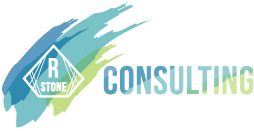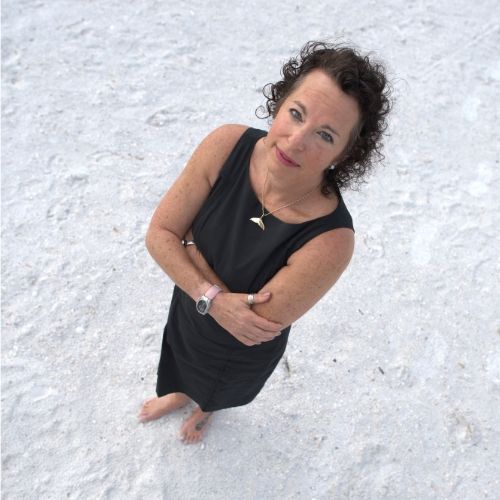Three Things I Learned From My Own Experience With Professional Burnout
Three things I learned from my own experience with professional Burnout
Just in case you missed it in the news, earlier this week, the World Health Organization added occupational “burnout” as a medical diagnosis. Within hours nearly every media outlet had released breaking news of this announcement. Hallelujah! You, I, We are not crazy.
Over the last 40 years burnout in the workforce has increased, especially among women and predominantly in the United States. Those who have gone through it have been embarrassed by their unnamed ailment, shamed, viewed as weak, and frankly ostracized by colleagues as a failure in life and a flop as a professional. None of this could be further from the truth. With the acknowledgement by the WHO that this is a legitimate medical condition, it opens the conversation for what the next steps are for dealing with professional burnout.
The International Classification of Diseases, or ICD-11, is the World Health Organization’s handbook that guides medical providers in diagnosing diseases. With the addition of Burnout in this handbook those who suffer with burnout now have a name for what they are going through.
Burnout now appears in the ICD-11’s definition of problems related to employment or unemployment. According to the handbook, doctors can diagnose someone with burnout if they meet the following symptoms:
- feelings of energy depletion or exhaustion
- increased mental distance from one’s job, or feelings of negativism or cynicism related to one’s job
- reduced professional efficacy
Sadly, the information from WHO stops here. They are able to diagnose it yet not treat it. That hasn’t been studied yet. But I have.
I call my experience with burnout my professional implosion because in 2014, there wasn’t a medical diagnosis for it. I was working 50-65 hours a week, had little time for my family, no social life, was overweight, over-medicated (including self medicated), miserable, mentally checked out and simply going through the motions as a high level executive with massive responsibilities to investors, my team and clients. When I tell my story to others now I give the visual of driving up I-95 from South Beach to Palm Beach, one of the most dangerous interstates in our country, where I figuratively “put the brakes on and stopped my card dead on I-95 and walked away from it”. While I didn’t literally do this, I did go home and draft a letter not of my resignation to the investors and president of our company, but my letter of retirement. At 48 years old.
It took me two years before I admitted to anyone – even my closest friends – that I had actually burned out. There was shame and embarrassment attached to the concept of burnout. I had failed, let others down, not achieved my goals, I was inefficient and not good enough.
Since my own experience with burnout (rather my implosion) I spent many months rediscovering who I was and what was important to me. Then I went to work to crack the code on what happened to me. I am not a doctor of psychology nor hold any degree which would medically make me an ‘expert’, however I have been through it and I learned much in my journey of recovery, repair and rebirth to the person I am today. What’s more, there is no better source of support and advocacy for someone going through burnout than someone who has transcended it and come out stronger and smarter on the other side.
Here’s what I learned having gone through burnout:
1-Women are more likely than men to experience burnout
Men are singularly focused and when things get tough, they will often shift gears and go in a new direction. Men easily compartmentalize and have higher levels of testosterone which help them to better handle stressful situations. Women on the other hand are natural multi-taskers, incorporate emotion into all they do and already have lower testosterone. Imagine as a woman in a high level position… kids, a husband and a home to run…all of this is of the utmost importance to take priority and do well – over oneself. Once a woman starts to hit menopause, their testosterone levels drop significantly and their ability to juggle all their responsibilities – and do them well – is challenged.
2-It cannot be averted
It’s a bit like the old wack-a-mole game. You get one thing under control and another pops up. Eventually, all the moles are popping up at once and you have no ability to handle any of them. It just can’t be done.
3-Burnout is not a failure – it is an opportunity to be reborn
This I tell you from my own personal experience and the work I’ve done to crack the code on burnout. Burnout is in its own way, nature’s way of saying ‘enough’. It is time for change. A do-over. Every person I have encountered & helped who has gone through burnout has come out the other side stronger, smarter and better for the experience and now live happier and more fulfilling lives truer to their values and belief systems.
So where do we go from here now that we know burnout is a real thing? The WHO adding this formal diagnosis raises as many questions as it answers – how do we move forward from here? We’ve known for years that corporations take their highest performers and load so much responsibility on them this is causing burnout in their highest performers. Now we have a name for it. Burnout.
And since this diagnosis is specific to job related issues, what is corporate America’s responsibility to preventing burnout? Will corporations with Employee Assistant Plans provide services for those at risk of burnout? Will coaching services be available to them? Beyond the EAP options, how will corporations handle it when their employees are heading towards burnout? How do they recognize it? Who is trained on their team to identify the symptoms? What’s more, there is no ‘treatment’ per se.
With both 9/11 and the economic crash of 2007-2010, corporations have lauded more and more on their employees. Employers expect workers to produce more with less, added ‘wellness services’ such as gyms, cafeterias, volunteer opportunities and even team sports meant to build comradery, but in actuality this is simply creating environments which keep their employees further and further from their homes, families, house of worship, and favorite activities which in the past would recharge their batteries for another week of work. This is not how humans were meant to be as we are social creatures needing family, attachment, and passions in order to thrive.
So step one has come to pass. You are not nuts. You are on the cusp of or already in the throes of burnout. I get it, it sucks. I’ve been there and I never want to be there again. But there is a light at the end of the tunnel. It will take work. Courage. Sacrifice. A deep dive back into yourself. You’ll have hard choices to make. I promise you will come out the other end of burnout stronger, happier and a hell of a lot smarter than when you went into it.
Resources: Burnout Research: Emergence and Scientific Investigation of a Contested Diagnosis; Linda V Heinemann and Torsten Heinemann, Jan-Mar 2017 Journals.sagepub.com/home/sgo |The Science of Burnout with Dr. Pati and Betsy Jordyn, https://www.betsyjordyn.com/products/business-by-design/categories/320489/posts/998378
About Rachelle
Rachelle Stone is a 25+ year veteran of the Meetings & Convention Industry who, in 2014 left the industry to transition to full time Consulting & Executive Coaching after her own personal implosion. She now guides business owners and stressed out executives through the strategic steps needed to breakthrough plateaus and glass ceilings, accelerate their growth trajectory, increase profits, dominate in their market and reach their goals WITHOUT burning out.



